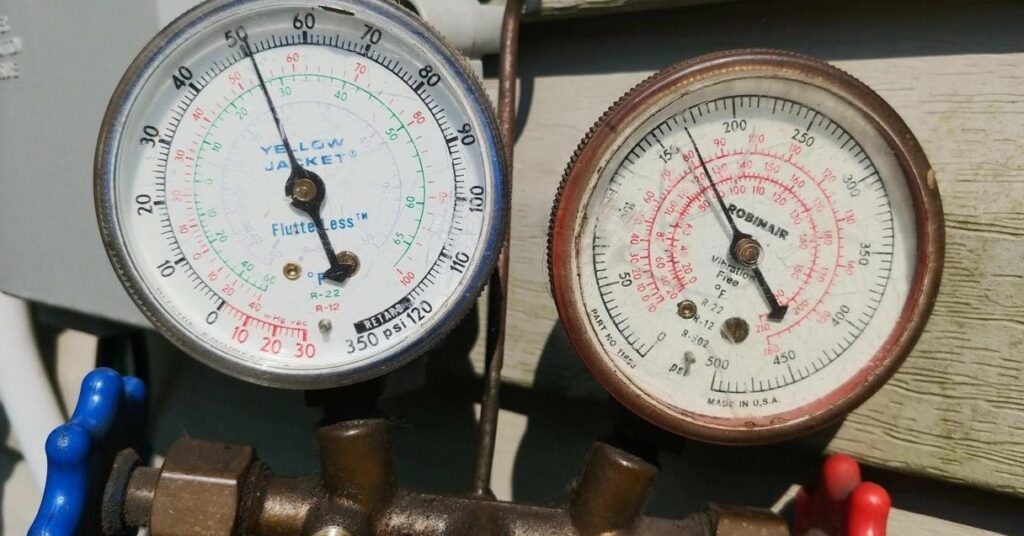Are you curious to know what is head pressure HVAC? You have come to the right place as I am going to tell you everything about head pressure HVAC in a very simple explanation. Without further discussion let’s begin to know what is head pressure HVAC?
When it comes to maintaining the comfort and climate control of indoor spaces, HVAC (Heating, Ventilation, and Air Conditioning) systems play a pivotal role. HVAC systems are intricate, with several components working together to regulate temperature, humidity, and air quality. One crucial aspect of HVAC systems that ensures their proper operation is “head pressure.” In this blog, we will delve into the concept of head pressure in HVAC systems, its significance, and how it affects the cooling process.
What Is Head Pressure HVAC?
Head pressure, also known as discharge pressure or high side pressure, is a fundamental parameter in HVAC systems, especially in air conditioning and refrigeration. It refers to the pressure of the refrigerant gas on the high-pressure side of the system, typically after it has been compressed by the compressor.
Significance Of Head Pressure In HVAC
Head pressure is a critical factor in HVAC systems, and it serves several essential functions:
- Cooling Cycle: In air conditioning and refrigeration systems, the refrigerant undergoes a continuous cycle of compression and expansion to absorb heat from indoor spaces and release it outside. The head pressure plays a vital role in this cycle by helping to maintain the proper operating conditions.
- Temperature Regulation: By controlling head pressure, HVAC systems can ensure that the refrigerant remains at the right temperature to facilitate heat transfer. This, in turn, helps maintain the desired indoor temperature.
- Efficiency and Performance: Proper head pressure management is crucial for the efficient operation of HVAC systems. When head pressure is too low or too high, it can lead to reduced cooling capacity, higher energy consumption, and potential system damage.
- Compressor Protection: Maintaining the correct head pressure is essential to prevent the compressor from overheating or experiencing excessive wear and tear. An overheated compressor can lead to costly repairs or replacements.
Find out more knowledgable facts by visiting Whatismeaningof.
Factors Affecting Head Pressure
Several factors can influence head pressure in HVAC systems:
- Ambient Temperature: The temperature of the outdoor environment where the condenser unit is located affects head pressure. Hotter outdoor temperatures typically result in higher head pressure.
- Refrigerant Type: Different refrigerants have different pressure-temperature characteristics. The type of refrigerant used in the system impacts the specific head pressure requirements.
- System Load: The cooling load, or the amount of heat the HVAC system needs to remove from indoor spaces, affects head pressure. A heavier load often requires higher head pressure.
- System Components: The design and condition of the components in the HVAC system, such as the condenser, evaporator coil, and expansion valve, also play a role in head pressure regulation.
Conclusion
Head pressure is a crucial element in the world of HVAC, ensuring that air conditioning and refrigeration systems operate efficiently and effectively. Proper head pressure management helps maintain the desired indoor temperature, protects the compressor, and optimizes energy consumption. Understanding the concept of head pressure and its significance is essential for HVAC professionals and homeowners alike, as it allows for the efficient and reliable operation of these vital systems, keeping indoor spaces comfortable and well-conditioned.
FAQ
What Is Another Name For Head Pressure In HVAC?
Head pressure is also sometimes referred to as discharge pressure or high side pressure. The output side of the compressor in an HVAC unit generates this pressure, and it can be affected by many variables.
Where Is Head Pressure HVAC?
This pressure is formed by compressing superheated refrigerant vapor and discharging the vapor into the condenser. True “head pressure” is measured at the discharge side of the compressor, not at the liquid line service valve such as on most split systems.
How Do You Check HVAC Head Pressure?
The head and suction pressures are actually measured at the same time with an HVAC manifold gauge, sometimes called just a “manifold” for short. Manifold gauges come in various shapes and sizes – analog (with dials and pointers) or digital (with an electronic display).
What Is Normal Head Pressure?
Intracranial pressure (ICP) is the pressure exerted by fluids such as cerebrospinal fluid (CSF) inside the skull and on the brain tissue. ICP is measured in millimeters of mercury (mmHg) and at rest, is normally 7–15 mmHg for a supine adult.
I Have Covered All The Following Queries And Topics In The Above Article
What Is Head Pressure In HVAC
What Is High Head Pressure HVAC
In HVAC What Is High Head Pressure
What Is The Head Pressure In HVAC
What Is High Head Pressure HVAC
What Is Head Pressure HVAC System
What Is Head Pressure HVAC Formula
What Is Head Pressure HVAC And How Does It Work
What Is Head Pressure In Refrigeration
What Causes High Head Pressure In Refrigeration
How To Fix High Head Pressure
What Causes High Head Pressure HVAC
What Is Head Pressure HVAC
What is head pressure in a condenser






